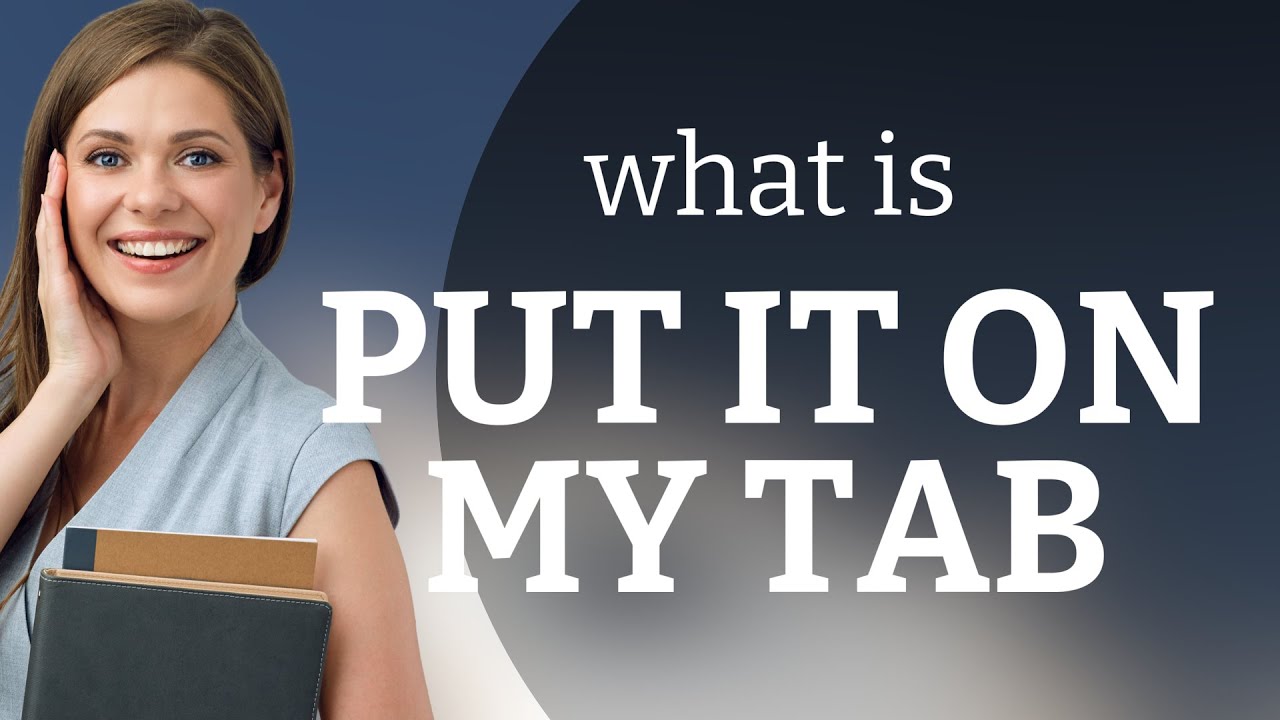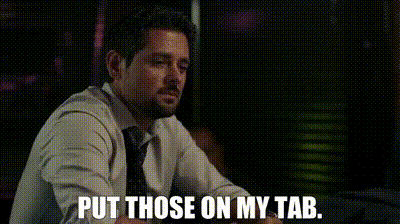5 Ways to Say Put It on My Tab

In various social and business settings, the phrase "put it on my tab" is a common way to request that the cost of goods or services be added to an existing account or bill. This simple expression has become a ubiquitous part of our language, often used in bars, restaurants, and other venues where patrons may accumulate charges throughout their visit. While the literal meaning is straightforward, there are numerous creative and colloquial ways to convey the same message. In this article, we will explore five alternative phrases that effectively communicate the desire to have items charged to one's account, providing a more diverse and engaging vocabulary for such occasions.
1. Charge It to My Account

One of the most direct alternatives to “put it on my tab” is to simply say, “charge it to my account.” This phrase explicitly communicates your intention to have the cost associated with your name or account number. It is a clear and concise way to inform the server, bartender, or cashier that you wish to have the item or service added to your existing balance. Using this phrase, you eliminate any ambiguity and ensure a smooth transaction process.
Real-World Application
Imagine you’re enjoying a relaxing evening at your favorite neighborhood bar. After a few rounds of drinks and some delicious bar snacks, you realize it’s time to settle the bill. Instead of asking the bartender to “put it on my tab,” you confidently say, “Charge it to my account, please.” This phrase not only demonstrates your familiarity with the establishment’s billing system but also adds a touch of sophistication to your interaction.
| Setting | Alternative Phrase |
|---|---|
| Restaurant | Add it to my bill |
| Hotel | Apply it to my room charges |
| Coffee Shop | Put it on my coffee card |

2. Include It in My Total

A more inclusive approach to expressing your desire to have items added to your bill is to say, “include it in my total.” This phrase indicates that you want the cost of the additional items or services to be factored into the overall amount you will be paying. It suggests a comprehensive calculation, ensuring that nothing is left out or forgotten.
Example Scenario
Consider a situation where you’re hosting a business meeting at a luxurious hotel. After an intense brainstorming session, you and your colleagues decide to take a break and enjoy a refreshing round of beverages. Instead of individually paying for your drinks, you approach the waiter and politely say, “Please include these drinks in my total. I’ll settle the bill at the end of our meeting.”
By using this phrase, you convey a sense of organization and efficiency, demonstrating your awareness of the billing process. It also indicates that you value convenience and simplicity, making it easier for both you and the staff to manage the transaction.
3. Add It to My Running Total
In certain settings, particularly bars or venues where patrons accumulate charges throughout the night, you may opt for the phrase “add it to my running total.” This expression implies that you have an ongoing tab or balance that you wish to maintain and update with each new purchase. It suggests a dynamic and evolving account, reflecting the continuous nature of your transactions.
Night Out at the Club
Imagine you’re celebrating a special occasion at a trendy nightclub. As the night progresses and you indulge in various cocktails and appetizers, you might approach the bartender and say, “Can you please add this round of drinks to my running total? I’d like to keep track of my spending.”
Using this phrase demonstrates your engagement with the billing process and your desire to maintain control over your expenses. It also showcases your familiarity with the establishment's system, indicating that you are a regular and valued patron.
4. Bill It to My Name
For a more formal and professional approach, you can request to have items “billed to your name.” This phrase is commonly used in business settings or when dealing with more formal establishments, such as fine dining restaurants or upscale hotels. It conveys a sense of professionalism and indicates that you wish to have the charges associated with your personal or corporate identity.
Business Lunch Meeting
Suppose you’re hosting a business lunch with potential clients at an exclusive restaurant. As you discuss the details of your collaboration over a delectable meal, you decide to treat your guests to a fine bottle of wine. To ensure a seamless transaction, you approach the sommelier and politely say, “Could you kindly bill this bottle of wine to my name? I’d like to extend my hospitality and make a positive impression.”
By using this phrase, you showcase your attention to detail and your understanding of the billing process in a professional context. It leaves a lasting impression on your guests, reflecting your commitment to maintaining a high standard of service and hospitality.
5. Credit It to My Account

In situations where you have a credit account or a pre-established line of credit with an establishment, you can use the phrase “credit it to my account.” This expression indicates that you have a trusted relationship with the business and that you wish to utilize your credit facilities to pay for the items or services.
Retail Therapy at Your Favorite Store
Let’s say you’re an avid shopper at your go-to fashion boutique, where you have a loyal customer account with a credit limit. As you browse the latest collection and select a few must-have pieces, you approach the sales associate and say, “I’d like to credit these items to my account. I trust the quality and know I’ll make great use of them.”
Using this phrase not only demonstrates your familiarity with the store's billing system but also showcases your confidence in the brand and your own financial management skills. It adds a touch of exclusivity to your shopping experience, making you feel valued as a loyal customer.
What is the best way to handle large bills when using these phrases?
+When dealing with substantial bills, it's advisable to clarify your payment method and any specific instructions with the staff beforehand. Communicate your intention to settle the bill in full or make arrangements for a deposit or partial payment. Clear communication ensures a smooth transaction and avoids any misunderstandings.
Are these phrases suitable for all types of establishments?
+While these phrases are versatile and applicable in various settings, it's essential to consider the context and the nature of the establishment. For example, using a more formal phrase like "bill it to my name" may be more appropriate in upscale restaurants or business meetings, whereas a casual "add it to my running total" might be better suited for a friendly neighborhood bar.
Can I use these phrases for non-financial transactions?
+Yes, these phrases can be adapted for non-financial contexts as well. For instance, you could use "add it to my tab" or "include it in my total" when requesting additional services, such as room service at a hotel or extra amenities during a spa treatment. The key is to adapt the phrase to fit the specific situation and maintain a clear and concise communication style.
By incorporating these alternative phrases into your vocabulary, you not only add variety to your conversations but also demonstrate your familiarity with different billing systems and social settings. Whether you’re enjoying a night out with friends or conducting business meetings, choosing the right phrase to “put it on your tab” can enhance your overall experience and leave a positive impression on those around you.



